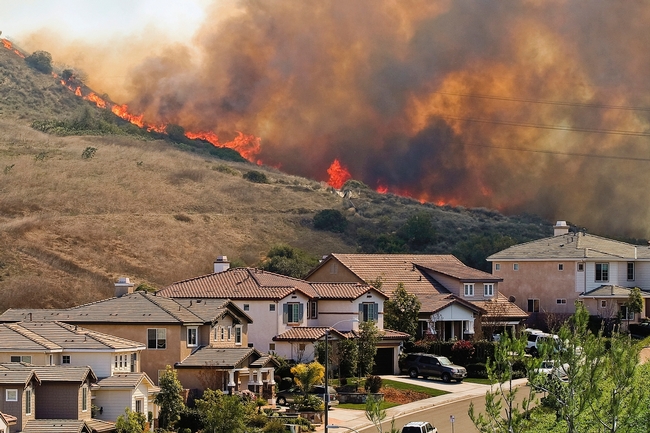Wildland-urban interface residents still build after burns
Even after wildfires have burned homes and taken lives, communities allow for rebuilding in wildland-urban interface areas prone to such disasters, reported Alistair Bland in the East Bay Express.
Van Butsic, a UC Cooperative Extension specialist at UC Berkeley, has studied the alarming trend of building homes in known fire-risk areas.
"We studied 30 of the largest fires since 1970," he said.
On average, 20 years after an inhabited area burns, most of the destroyed homes are rebuilt and many new homes were added — about twice as many homes in total as there were at the time of the burn.
UCCE forestry and natural resources advisor Sabrina Drill said people seem to have short memories.
"I (would) think people might think twice about building a home where there had just been a fire, but people seem to forget after about three years," Drill said.
Drill, Van Bustic and other UC Agriculture and Natural Resources scientists were sources for the nearly 5,000-word East Bay Express story about the hazards to people and property in the wildland-urban interface and ways to manage the problem in a state where climate change appears to be making wildfires more frequent and intense.
The article said most fire experts and community leaders believe not enough is being done to prevent catastrophic blazes. They want more prescribed burning to reduce fuel loads, increased funding for firefighting and wildfire research, and stricter controls on development in wooded areas.
"But that's so politically contentious — it's a line politicians walk up to but turn away from," said William Stewart, a UCCE forestry specialist at UC Berkeley.
He said society tends to be concerned about wildfires during and immediately after high-profile catastrophic events. However, the attention is often short-lived and doesn't generate change before the next fire strikes.
"It's surprisingly hard to get investments in fire prevention strategies, even after the scale of the fires we just had," Stewart said.
Stewart believes California's government should support more research into fire-safe building patterns and more effective vegetation management. Perhaps most importantly of all, he said, Californians must turn wildfire history into a learning experience.
"If we don't make significant investments in new ways of managing vegetation and building these housing developments in the (wildland-urban interface)," Stewart said, "we're going to be on this hamster wheel forever."


